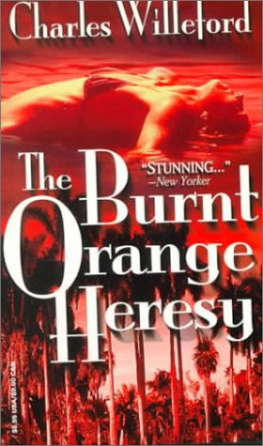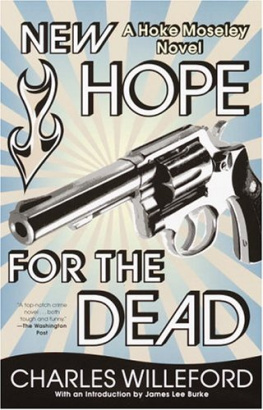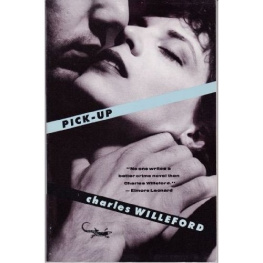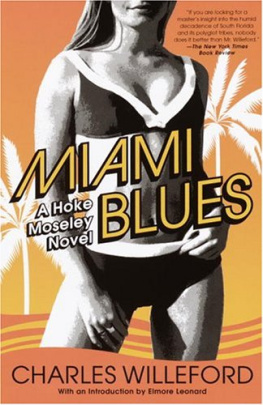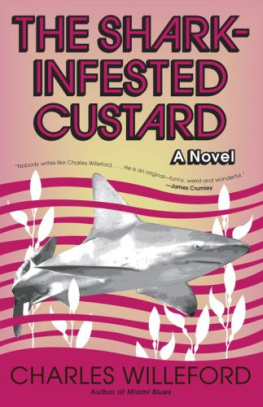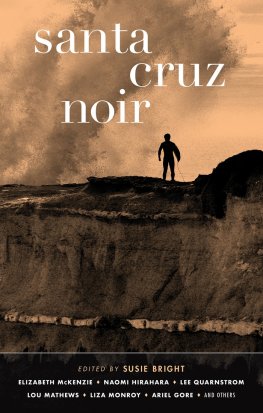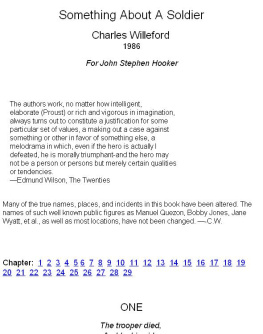THE BURNT ORANGE HERESY
by Charles Willeford
Copyright 1971
Nothing exists.
If anything exists, it is incomprehensible.
If anything was comprehensible,
it would be incommunicable.
-- Gorgias
part one nothing exists
Two hours ago the Railway Expressman delivered the crated, newly published _International Encyclopedia of Fine Arts_ to my Palm Beach apartment. I signed for the set, turned the thermostat of the air-conditioner up three degrees, found a clawhammer in the kitchen, and broke open the crate. Twenty-four beautiful buckram-bound volumes, eggshell paper, decide edged. Six laborious years in preparation, more than twenty-five hundred illustrations-- 436 in full-color plates--and each thoroughly researched article written and signed by a noted authority in his specific field of art history.
Two articles were mine. And my name, James Figueras, was also referred to by other critics in three more articles. By quoting me, they gained authoritative support for their own opinions.
In my limited visionary world, the world of art criticism, where there are fewer than twenty-five men--and no women--earning their bread as full-time art critics (art reviewers for newspapers don't count), my name as an authority in this definitive encydopedia means Success with an uppercase S. I thought about it for a moment. Only twenty-five full-time art critics in America, out of a population of more than two hundred million! This is a small number, indeed, of men who are able to look at art and understand it, and then interpret it in writing in such a way that those who care can share the aesthetic experience.
Clive Bell claimed that art was "significant form' I have no quarrel with that, but he never carried his thesis out to its obvious conclusion. It is the critic who makes the form(s) significant to the viewer! In seven more months I will reach my thirty-fifth birthday. I am the youngest authority with signed articles in the new _Encyclopedia_, and, I realized at that moment, if I lived long enough I had every opportunity of becoming the greatest art critic in America-- and perhaps the world. With tenderness, I removed the heavy volumes from the crate and lined them up on my desk.
The complete set, if ordered by subscribers in advance of the announced publication date--and most universities, colleges, and larger public libraries would take advantage of the prepublication offer--sold for $350, plus shipping charges. After publication date, the _Encyclopedia_ would sell for $500, with the option of buying an annual volume on the art of that year for only $10 (same good paper, same attractive binding).
It goes without saying, inasmuch as my field is contemporary art, that my name will appear in all of those yearbooks.
I had read the page proofs months before, of course, but I slowly reread my 1,600-word piece on art and the preschool child with the kind of satisfaction that any well-done professional job provides a reader. It was a tightly summarized condensation of my book, _Art and the Preschool Child_, which, in turn, was a rewritten revision of my Columbia Master's thesis. This book had launched me as an art critic, and, at the same time, the book was a failure. I say that the book was a failure because two colleges of education in two major universities adopted the book as a text for courses in child psychology, thereby indicating a failure on the part of the educators concerned to understand the thesis of the book, children, and psychology. Nevertheless, the book had enabled me to escape from the teaching of art history and had put me into full-time writing as an art critic.
Thomas Wyatt Russell, managing editor, _Fine Arts: The Americas_, who had read and understood the book, offered me a position on the magazine as a columnist and contributing editor, with a stipend of four hundred dollars a month. And _Fine Arts: The Americas_, which loses more than fifty thousand dollars a year for the foundation that supports it, is easily the most successful art magazine published in America--or anywhere else, for that matter. Admittedly, four hundred dollars a month is a niggardly sum, but my name on the masthead of this prestigious magazine was the wedge I needed at the time to sell free-lance articles to other art magazines. My income from the latter source was uneven, of course, but with my assured monthly pittance it was enough--so long as I remained single, which was my avowed intention--to avoid teaching, which I despised, and enough to avoid the chffly confinement of museum work--the only other alternative open to those who selected art history as graduate degrees. There is always advertising, of course, but one does not deliberately devote one's time to the in-depth study of art history needed for a graduate degree to enter advertising, regardless of the money to be made in that field.
I closed the book, pushed it to one side, and then reached for Volume III. My fingers trembled--a little--as I lit a cigarette. I knew why I had lingered so long over the preschool child piece, even though I hated to admit it to myself. For a long time (I said to myself that I was only waiting to finish my cigarette first), I was physically unable to open the book to my article on Jacques Debierue. Every evil thing Dorian Gray did appeared on the face of his closeted portrait, but in my case, I wonder sometimes if there is a movie projector in a closet somewhere whirring away, showing the events of those two days of my life over and over. Evil, like everything else, should keep pace with the times, and I'm not a turn-of-the-century dilettante like Dorian Gray. I'm a professional, and as contemporary as the glaring Florida sun outside my window.
Despite the air-conditioning I perspired so heavily that my thick sideburns were matted and damp. Here, in this beautiful volume, was the bitter truth about myself at last. Did I owe my present reputation and success to Debierue, or did Debierue owe his success and reputation to me?
"Wherever you find ache," John Heywood wrote, "thou shalt not like him." The thought of Debierue made me ache all right--and I did not like the ache, nor did I like myself. But nothing, nothing in this world, could prevent me from reading my article on Jacques Debierue...
Gloria Bentham didn't know a damned thing about art, but that singularity did not prevent her from becoming a successful dealer and gallery owner in Palm Beach. To hold her own, and a little more, where there were thirty full-time galleries open during the "season," was more than a minor achievement, although the burgeoning art movement in recent years has made it possible to sell almost any artifact for some kind of sum. Nevertheless, it is more important for a dealer to understand people than it is to understand art. And Gloria, skinny, self-effacing, plain, had the patient ability to listen to people--a characteristic that often passes for understanding.
As I drove north toward Palm Beach on A1A from Miami, I thought about Gloria to avoid thinking about other things, but without much satisfaction. I had taken the longer, slower route instead of the Sunshine Parkway because I had wanted the extra hour or so it would take to sort out my thoughts about what I would write about Miami art, and to avoid, for an additional hour, the problem--if it was still a problem--of Berenice Hollis. Nothing is simple, and the reason I am a good critic is that I have learned the deep, dark secret of criticism. Thinking, the process of thinking, and the man thinking are all one and the same. And if this is true, and I live as though it is, then the man painting, the painting, and the process of painting are also one and the same. No one, and nothing, is ever simple, and Gloria had been anxious, too anxious, for me to get back to Palm Beach to attend the preview of her new show. The show was not important, nor was the idea unique. It was merely logical.
Next page
